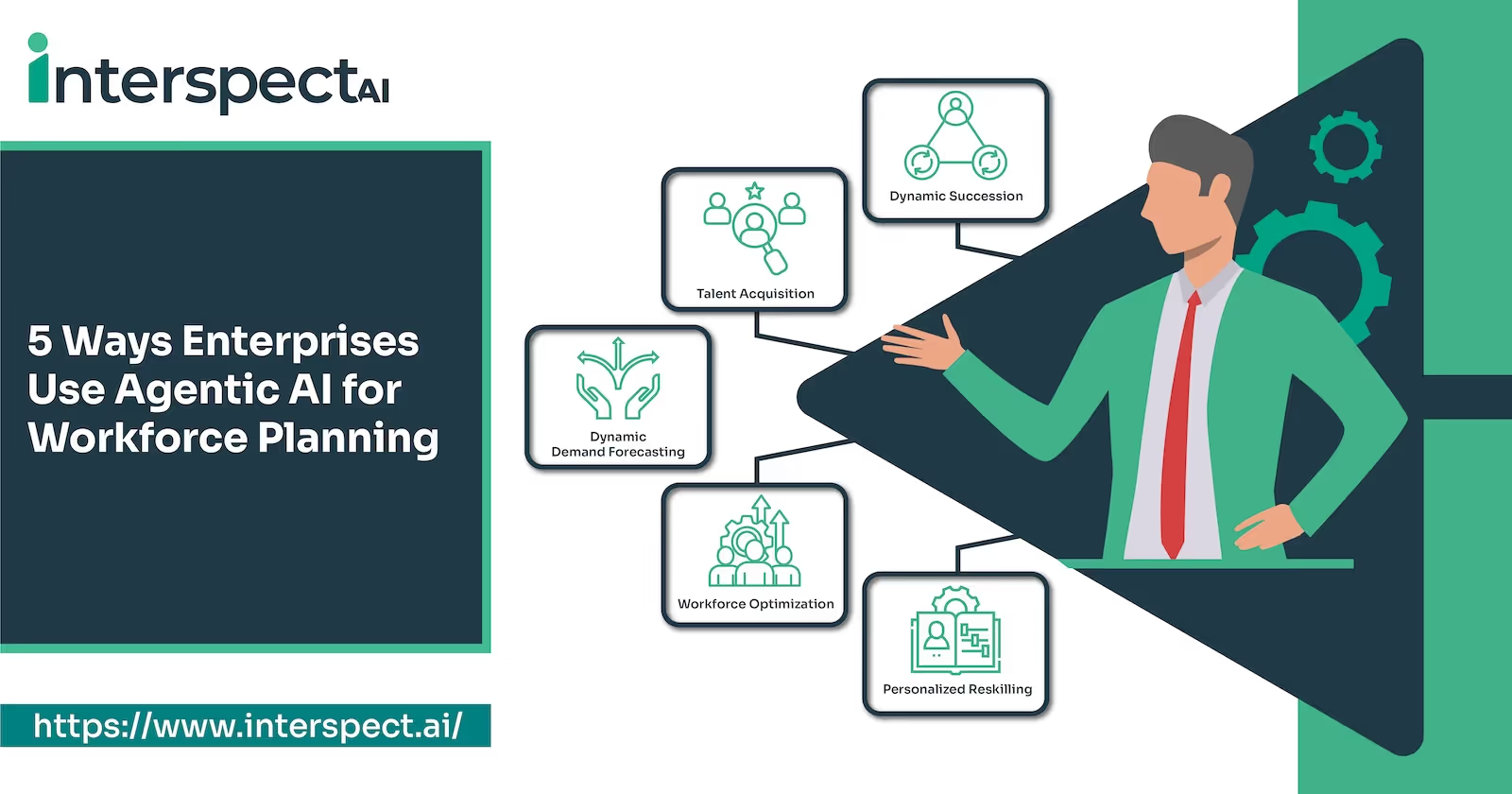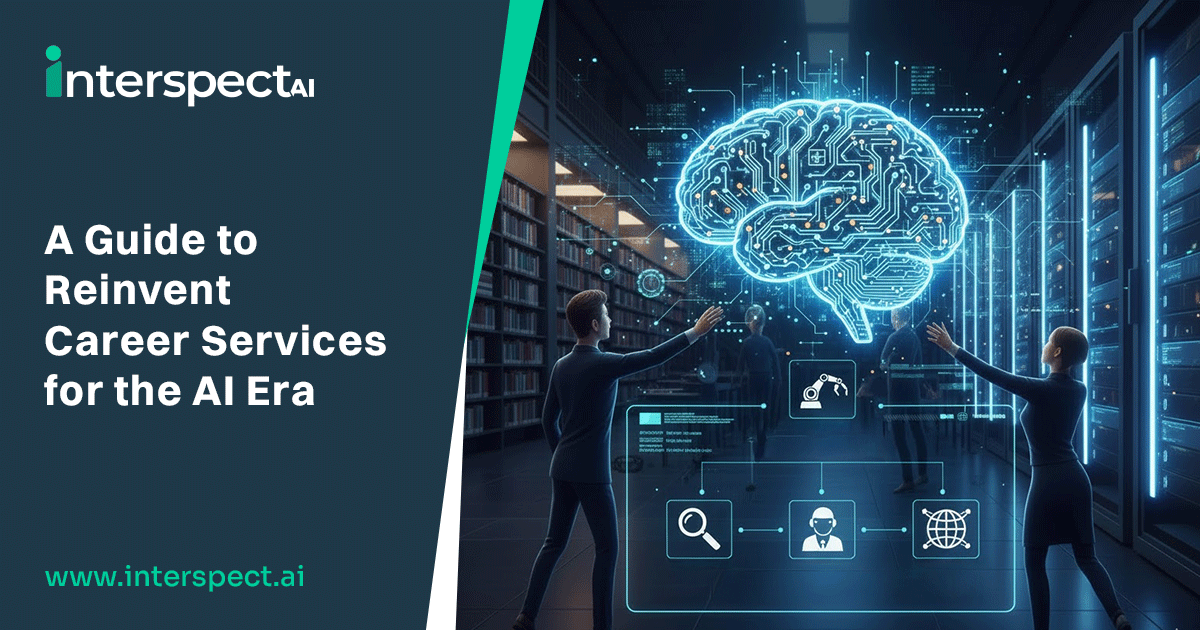
Artificial Intelligence (AI) has rapidly advanced from merely predicting outcomes to autonomously executing entire business workflows. This new frontier is defined by Agentic AI (AAI)—systems that reason, plan, and execute multi-step tasks without constant human oversight.
For large enterprises, AAI is redefining Strategic Workforce Planning (SWP), transforming it from a slow, periodic exercise into a dynamic, continuous function. By 2028, Gartner projects that one-third of enterprise software solutions will include agentic AI, facilitating the autonomous execution of up to 15% of day-to-day decisions.
Here are five strategic ways enterprises are leveraging agentic AI to build dynamic workforce resilience.
1. Dynamic Demand Forecasting and Predictive Simulation
Agentic AI systems transform static modeling into continuous, forward-looking forecasting. AAI autonomously learns from historical patterns, external influences (like weather or promotions), and real-time data to generate exact, location-specific demand forecasts.
- Continuous Adjustment: Unlike older systems that require manual tuning, the agent continuously refines its predictions, recognizing shifts in demand and adapting forecasts accordingly.
- Proactive Resilience: Agentic tools can simulate complex workforce scenarios, such as modeling the financial risks of using employees versus contractors, enabling leaders to assess talent strategies and enhance organizational agility proactively.
2. Hyper-Accelerated Talent Acquisition
AAI agents take on the complex, multi-platform tasks inherent in high-volume recruitment, delivering radical speed in securing talent.
- Autonomous Workflows: Agents autonomously handle entire recruitment workflows, including creating job postings directly from strategic workforce plans, sourcing candidates across multiple platforms, and coordinating complex scheduling with candidates and managers.
- Quantifiable Results: Enterprises implementing AAI in talent acquisition have reported up to a 79% faster time-to-hire and a 30% reduction in turnover, demonstrating its strategic impact on efficiency and retention.
3. Personalized Reskilling and Development Pathways
This application future-proofs the existing workforce by automating the identification of skill deficits and the execution of highly tailored development plans.
- Skills Gap Detection: AAI agents facilitate continuous skill gap detection by processing vast amounts of organizational data, including HRIS records, project outcomes, and performance reviews.
- Outcome Engines: AAI transforms the Learning Management System (LMS) from a content warehouse into an "outcome engine" by proactively planning personalized learning paths that mix micro-lessons, on-the-job tasks, and mentoring check-ins. This aligns training with both individual interests and business requirements, enhancing employee experience and retention.
4. Dynamic Succession and Internal Talent Mobility
Agentic systems leverage objective talent data and continuous monitoring to build resilient leadership pipelines, mitigating the risk associated with critical role vacancies.
- Objective Potential Identification: AAI moves beyond subjective intuition by using objective, data-driven assessments to identify high-potential employees across the entire workforce, not just the executive suite.
- Proactive Planning: The agent proactively identifies potential leaders, generates personalized growth plans tailored to future critical roles, and dynamically updates succession plans as employees demonstrate readiness. This comprehensive, data-driven approach builds stronger, more diverse pipelines.
5. Proactive Compliance and Workforce Optimization
AAI ensures continuous efficiency and adherence to regulatory requirements by autonomously executing complex operational tasks.
- Regulatory Monitoring: Agents continuously scan labor laws and tax updates across multiple jurisdictions, automatically updating workforce cost models and flagging potential compliance risks (e.g., worker classification or visa issues) before they disrupt plans.
- Autonomous Scheduling: AAI agents continuously evaluate operational constraints, forecast real-time labor needs, and dynamically generate optimized schedules that align with business goals, employee preferences, and all applicable compliance requirements.
The InterspectAI Difference: Building the Agentic Enterprise
InterspectAI’s core platform, Spectra, provides the underlying agentic AI architecture necessary to realize these SWP pillars. Spectra is built on advanced Multi-Agent Systems, designed to deliver conversational intelligence that can "hear, see, reason, and speak" and take goal-directed action.
While best known for accelerating high-volume interviewing (SpectraHire), Spectra's fundamental capability is converting unstructured data into structured, actionable intelligence (configurable and delivered in JSON). This structured data extraction and bias reduction via Non-profiling algorithms are prerequisites for integrating AAI into core enterprise platforms (HRIS, ATS) and fulfilling the objective, ethical requirements of dynamic workforce planning across all five areas listed above.
Ready to Deploy Agentic AI in Your Organization?
Agentic AI elevates HR and SWP leaders from administrative managers to strategic partners. The competitive advantage belongs to enterprises that deploy AAI to automate complex workflows and focus their human teams on creativity and strategy.
Request a Demo of the Spectra today to integrate autonomous, data-rich intelligence across your hiring, compliance, and strategic workforce planning needs.
Frequently Asked Questions (FAQs)
Q: How does agentic AI differ from traditional Predictive AI in workforce planning?
Traditional Predictive AI uses statistical models to forecast outcomes, such as estimating attrition risk. Agentic AI goes further by adding autonomy: it can reason, plan action steps, and execute entire multi-step tasks without constant human oversight, such as autonomously generating optimized schedules or initiating reskilling paths.
Q: What is the measurable ROI of implementing agentic AI in HR workflows?
The ROI for agentic AI is significant, with an average expected return reported at 171% and business process acceleration of 30% to 50%. Specific HR gains include up to a 79% faster time-to-hire, a 30% reduction in turnover, and up to a 45% reduction in manual administrative work.
Q: What is the strategic role of the HR professional in an agentic AI enterprise?
The HR professional's role shifts from a transactional administrator to a strategic talent advisor. By offloading repetitive work to agents, HR can focus on high-value human activities that require empathy, complex strategic planning, organizational governance, and human judgment.
Q: How do enterprises ensure agentic AI systems remain compliant and fair?
AAI deployment requires governance-first strategies. Enterprises mitigate bias by mandating regular audits of workforce data and embedding fairness metrics into agent design. Furthermore, they must ensure compliance by implementing human supervision and escalation protocols to control and ensure results are bias-free.
Subscribe to The InterspectAI Blog


%201.svg)








